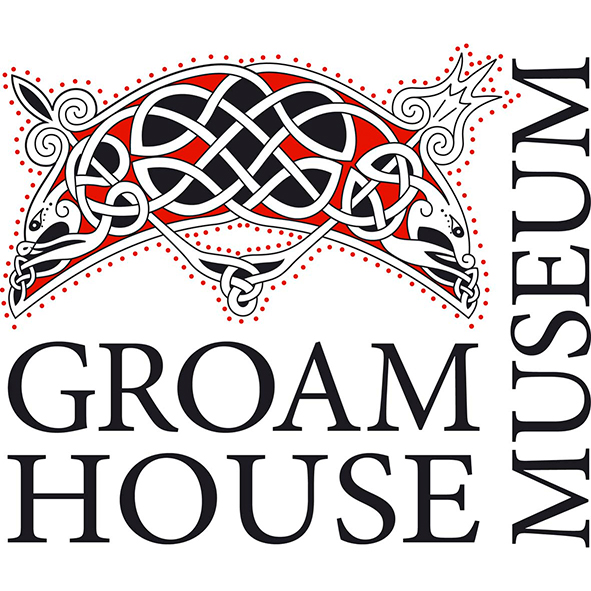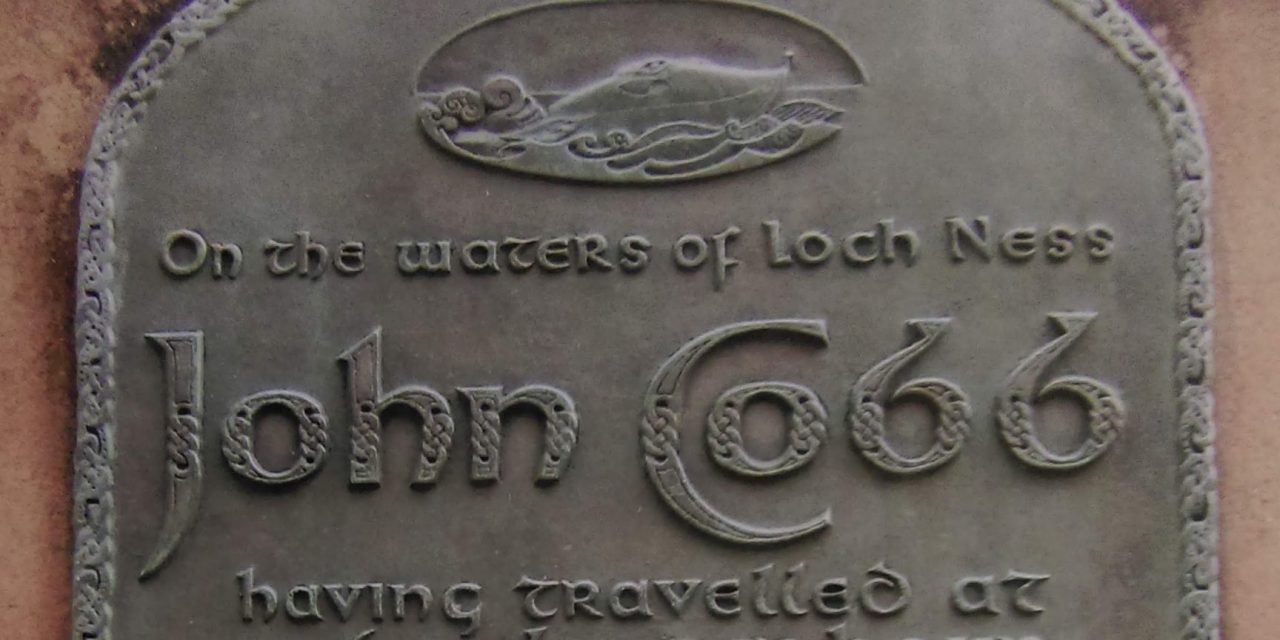In September 1952, racing driver John Cobb attempted to break the World Water Speed Record on Loch Ness, near to Drumnadrochit where George Bain was living at the time setting up his College of Celtic Cultures.
In the crowds gathered along the side of the loch, George Bain set up with sketch pad and conte crayon to record the event. Bain’s sketch from the 19 September shows the view from Lower Lenie, cars parked on the side of the road, the road-side fence lined with people, barely space to squeeze between them. John Cobb’s boat Crusader is a dart of spray, shooting south-wards down the loch (ROMGH.2006.235). Cobb attempted the record on the mile-long course every day for over a week, reaching speeds over 200 mph. It seems that Bain was out at the same spot sketching the attempt on at least one other day from a similar, yet subtly different sketch in the collection (ROMGH.2006.146).
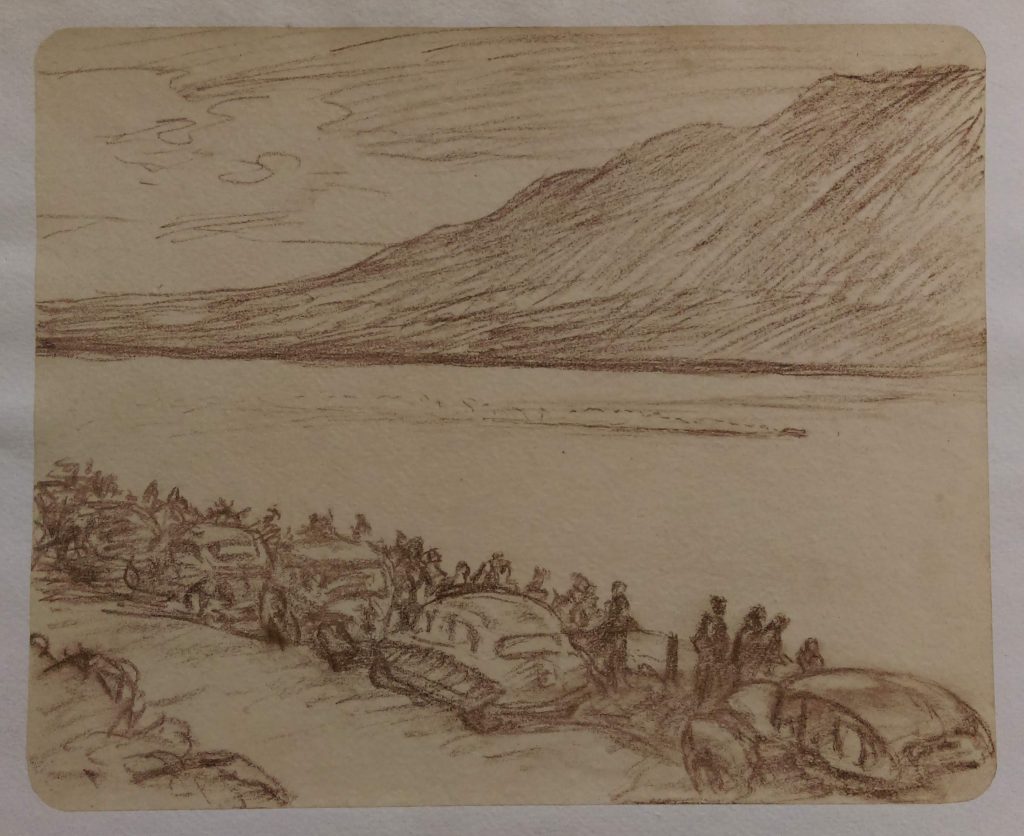
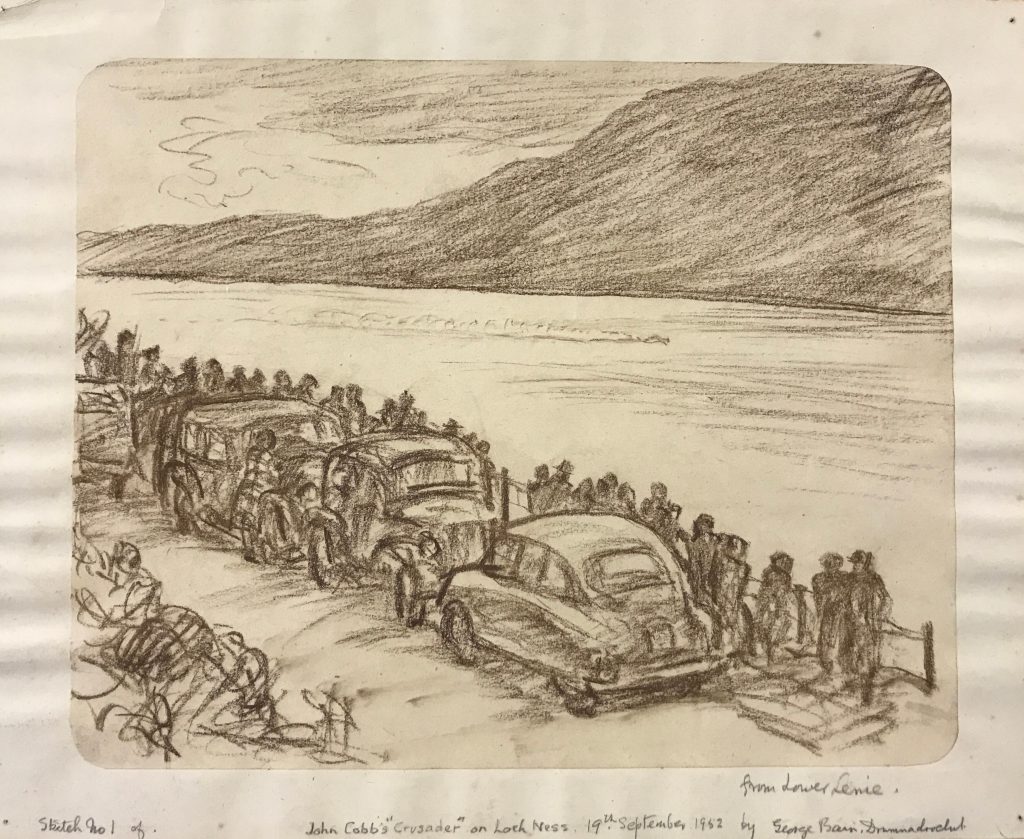
Unfortunately, on 29 September, the Crusader hit an unexpected wake in the water and the boat disintegrated, killing Cobb. The moment was captured on film in this newsreel from Pathé.
Although John Cobb’s body was recovered from the loch and taken to Surrey to be buried, the Glen Urquhart Rural Community Association decided that a memorial cairn should be erected by Loch Ness. George Bain’s design for a plaque for the cairn was chosen by the committee and recommended to Mrs Cobb and John Cobb’s trustees, who approved of the design (ROMGH.2006.61).

The plaque shows the Crusader surging through the water with the text:
On the waters of Loch Ness
John Cobb
having travelled at
206 miles per hour
in an attempt to gain the
World’s Water
Speed Record
lost his life
in this bay
Sept. 29th 1952.
This memorial is erected as a tribute
to the memory of a gallant gentleman
by the people of Glen Urquhart.
Urram do’n treun
agus do’n iriosal (honour to the brave and to the humble).

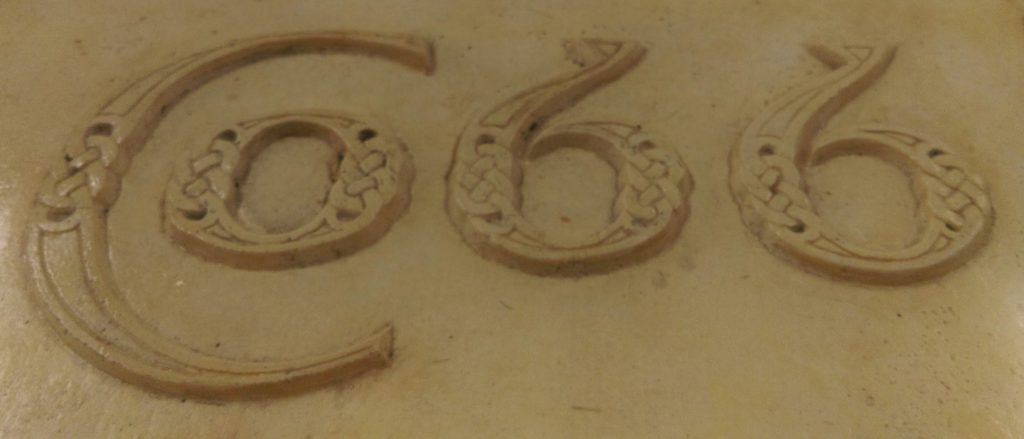
In this plaster cast of the design (ROMGH.1999.362) Bain’s love of Celtic art shows in the interlace border, the subtle interlace integrated into the letters of John Cobb’s name, and the letter forms of the rest of the text. Yet overall the plaque is restrained – the text sits soberly on a blank background, without the exuberance of pattern and symbol of much Bain’s other work. Seeing this piece alongside the rest of Bain’s work in the George Bain Collection somehow increases its sense of gravity, but I wonder whether the restraint was rather a pragmatic decision – Bain knew that his design would have to appeal to people who were not as invested in Celtic art as he was. In contrast, the memorial plaque he designed for his wife, Jessie Mackintosh, five years later is crammed with pattern.

The memorial plaque was installed on a cairn alongside the road, and unveiled by Eileen Holloway, John Cobb’s sister. Bain carefully cut out and kept the newspaper reports (ROMGH.2005.5.8.25.2). You can still visit the memorial cairn today – follow the A82 south of Urquhart Castle and park in the first layby on the west side of the road, the memorial is just across the road.
